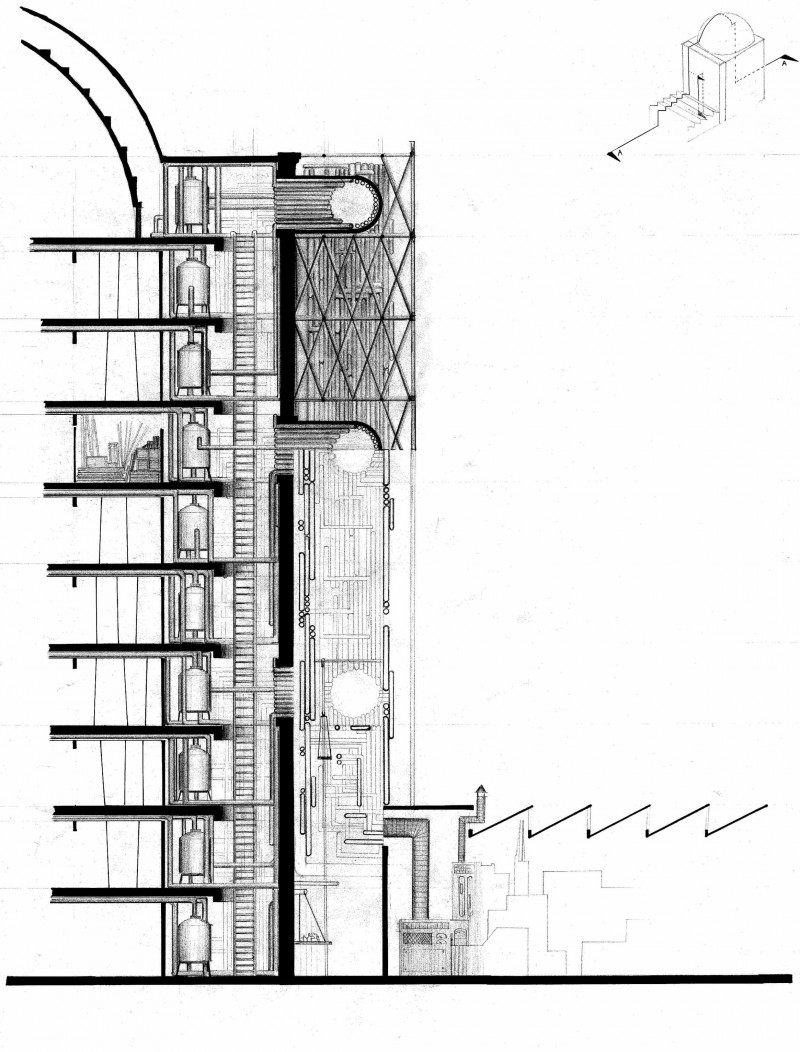Billennium Dwelling
To say that the city is overflowing with people is an understatement. The population is rising exponentially as the government incentivizes procreation, the formerly sprawling metro-area has been reigned in, and the last few farmers are replaced by automated machines and relocated to The City. Only the oldest members of the population can recall the brief moment of time in their childhood when people still lived in single family homes. They had space. It seems absurd and utopian to even consider that amount of space for any modern city dweller. Those times and the luxuries of space are now only a form of collective nostalgia… dreams.
Speaking of dreamers — K. Hong is a graduate student studying architecture “global spatial performance” at the City University International (C.U.I). K’s research, not unlike most of his peers and professors, revolves around spatial optimization and the studies of social interactions resulting from optimizations. Any discipline at CUI that deals with the space, the design of, use of, theory of, and laws of; are subject to rigorous governmental approval. In K’s notebook he has noted some of the hottest approved topics of study at C.U.I, an abbreviated sample from the list is as follows: material thickness reduction theory and application; rigidity and freedom, agency and adjacency; stacking, packing, hoarding, and storing – collection habits for transient urban populations; hot air – acoustics and ventilation for humans and machines; voluminous and valuable vistas – anamorphic projection for healthy living…
Nearing the end of his graduate study, K is beginning to realize that he has been pigeonholed by his academic advisers into writing a very technical thesis on the history of thickness reduction for laminate composite partitions and their potential for spatial optimization and benefit for The City. K is disenchanted about this direction of study, and finds that his personal politics are increasingly in conflict with the strict spatial laws enforced by the City Government. He has contemplated leaving the program on several occasions. But he is certainly not alone in this internal conflict.
For the past two months, K. Hong has been living with his friend and long time roommate, C. Letto, in a 5.25 square meter room. C recently graduated from C.U.I with a Master’s of Science in Mediation and is now a practicing mediation case worker for The City.
Ironically, K’s studies on spatial optimization have required him to accumulate a large number of books, material samples, testing equipment, loose documents, data sheets, journal articles, legal proceedings, and interview data, images, and videos stored on digital drives. He has been attempting to digitize this information, but it is no use, it accumulates faster than he can process the information. The amount of material has accumulated to the point where K can no longer move around his apartment without a careful choreography of materials and human contortions. K often wakes up in the morning with impressions of paper and ink from laser-reproduced texts on his skin. C, in an act of domestic mediation, has taped a line through the center of the room that (he hopes) serves as an invisible partition and reminder of the incident that got them evicted from their last room.
Yesterday, the City Inspector was making rounds for routine fire inspections in K & C’s district. More than one hundred infractions of The City code! How could that be, was it the hoarding of paper, the subtle outward tilts in partition walls? According to the Inspector, there were two options: move out immediately, or pay for all violations. Paying was not an option, ethically, financially, or otherwise. So, K & C were out again. Piles of intricately collated paper and documents were furiously yanked from their locations and crammed into a large black duffle bag.
It is here, at this moment of cramming and crumpling that K has a flash of inspiration (Perhaps the physical burden of paperwork and internal conflict has finally provoked action). K reaches into the duffel bag and yanks out two already crumpled pieces of paper and shakes them excitedly in C’s face and exclaims in an excited yell-whisper:
— Space —
Could it be true?
This project challenges the students to construct the Billennium City inspired by J.G. Ballard’s short story, Billennium, and to design a dwelling for C and K within this Billennium City on a site behind a billboard.
INDA First Year Design Studio, 2013, 2014
Assignment Text by Will Patera

